‘guntû’, a Small Ryokan Afloat in the Seto Inland Sea.
guntû, the name of a small boat with just nineteen rooms, sails the waters of the Seto Inland Sea with its countless islands, large and small. It makes the kind of voyage only possible in that special sea.
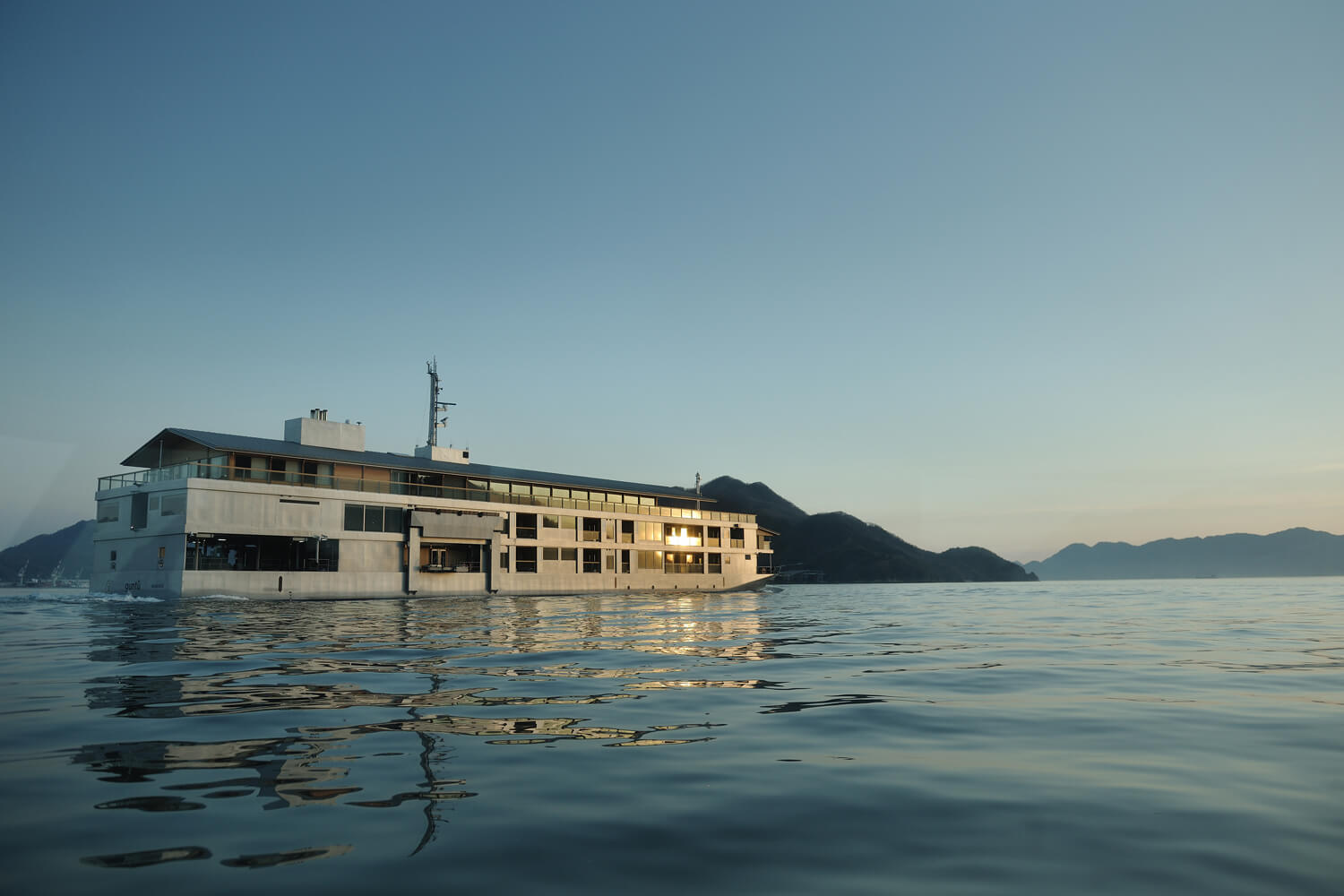
What is the special attraction—the true charm—of boat trips? Is it because one leaves one’s everyday life on land and spends time at sea? Still, the value of such trips is not necessarily in traveling far away from the coast, off into the open ocean. Spending time cuddled close to land can offer just as many pleasures as well.
In October 2017, the passenger ship ‘guntû’ was commissioned at Onomichi in Hiroshima Prefecture, Japan. The Seto Inland Sea, squeezed between Japan’s main Honshu Island and the island of Shikoku, is dotted with myriad small islands, lending it an attractive air. guntû was created with the express purpose of sailing the placid waters of this sea, and this sea alone.
Usually the phrase ‘passenger ship’ evokes the image of giant, edifice-like ship. However, guntû is amazingly small. The appearance of guntû awaiting its departure at a pier in the Bela Vista Marina at Onomichi, its home port, does not exude the overpowering feeling of a huge passenger ship. Its gabled roof even suggests the outward appearance of a traditional Japanese house. The designer of the boat was the Japanese architect Yasushi Horibe known as a specialist in designing comfortable housing. On guntû as well, he brilliantly realised passenger rooms and spaces that somehow match the natural features and climate of the Seto Inland Sea. With only nineteen passenger rooms, the boat travels the sea specifically with that limited number of guests in mind.

The wooden deck, made only from wood and nothing else. The gabled roof typical of traditional Japanese houses is a distinctive feature.
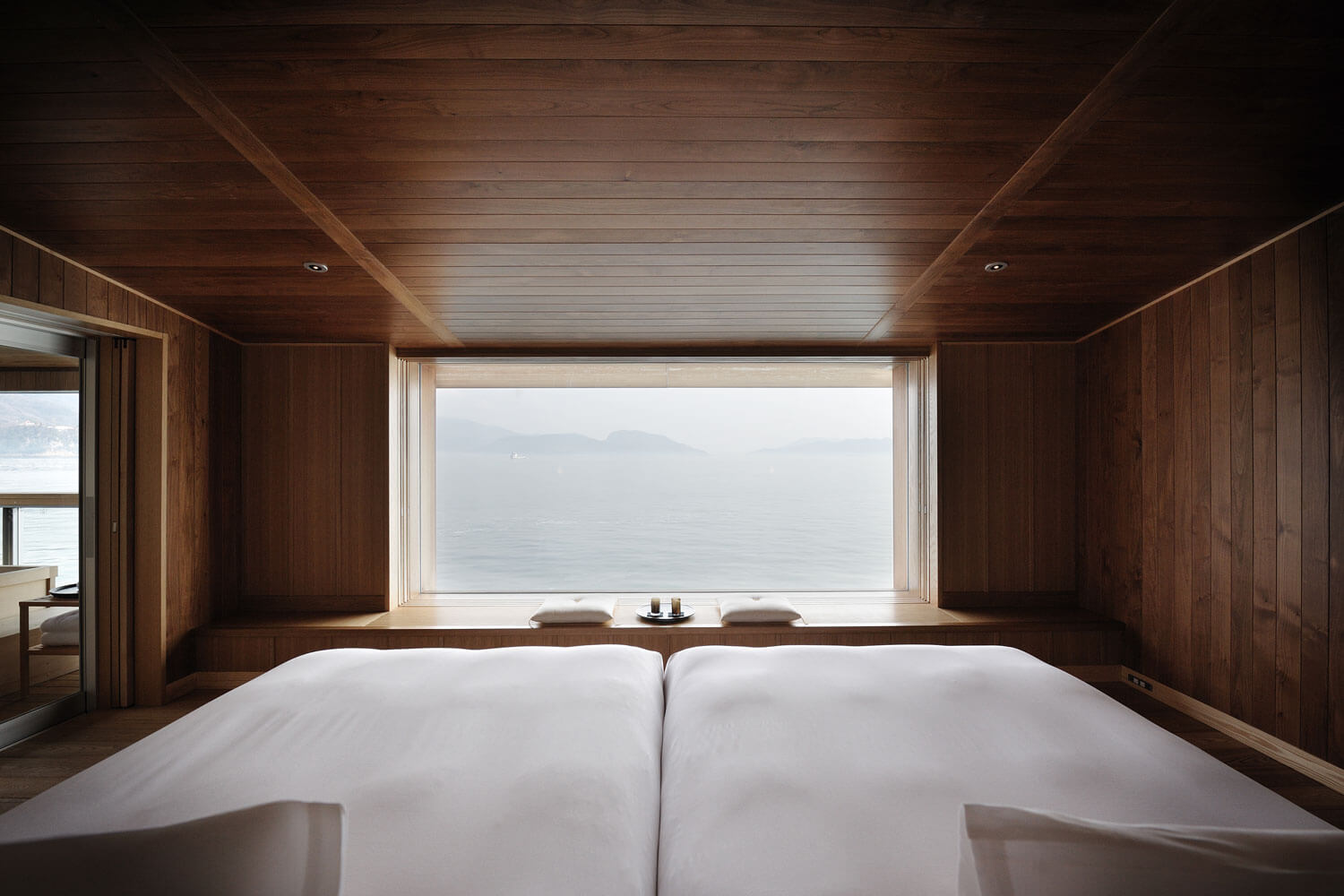
The bedroom of the ‘guntû Suite’, located at the prow of the boat—a relatively unusual location for such rooms on general passenger ships.

The wooden bath in the ‘Grand Suite’, made from hinoki, or Japanese cypress, is ensconced in the room’s balcony, providing guests with a view of the changing scenery as they relax contentedly.
Light gently pours into the entrance hall, the accoutrements of which are covered in stucco or plaster. As one climbs the spiral stairs onto the third floor, an open wooden deck opens up onto a grand vista, with the waters of the Seto Inland Sea serving as a backdrop. There is not a scintilla of the cold steely feeling that is so typical of ships. The chairs, tables, and floors, along with the verandahs gracing both sides of the boat, are all totally made from wood. Moreover, as many as eleven different types of wood have been utilised, each depending on the function of the spot: chestnut and sawara cypress for the decks, hinoki cypress for the verandahs, and alder wood for the passenger rooms, and so forth. For boats in general, one of the most crucial issues is to avoid fire, so the use of wooden materials is normally avoided at all cost. However, Onomichi’s Setouchi Cruise, a group of companies that primarily builds boats, has overcome that difficulty through its wealth of experience and technology.

The plaster-coated spiral stairway offers not only a modern appearance, but also a traditional ‘Japanese-ness’ as represented by the plastered surfaces.

In the lounge within the boat’s stern, guests can observe demonstrations of Japanese traditional wagashi sweets being made before their very eyes.
Different sailing routes are available from the boat’s base at the Bela Vista Marina in Onomichi, including the eastern loop that travels toward the waters off Hinase Town in Okayama Prefecture, and the western loop that tours as far as the waters off Kaminoseki Town in Yamaguchi Prefecture. The accommodation plans range from two nights and three days to a maximum of six nights and seven days. The courses include various activities that are only feasible in the Seto Inland Sea, such as tender landings for guests to take a stroll on Miyajima in Hiroshima Prefecture, known internationally for its Itsukushima Shrine, as well as viewings of the unloading of the catch from oyster rafts. As mentioned previously, guntû is a passenger boat built from scratch exclusively for cruises within the Seto Inland Sea. To put it differently, it is impossible for the boat ever to leave its home base of the Seto Inland Sea, given that it has not been fitted with any of the specifications of a ship built for ocean voyages. Such purity and decisiveness in design, on the other hand, is precisely what makes for its luxury.
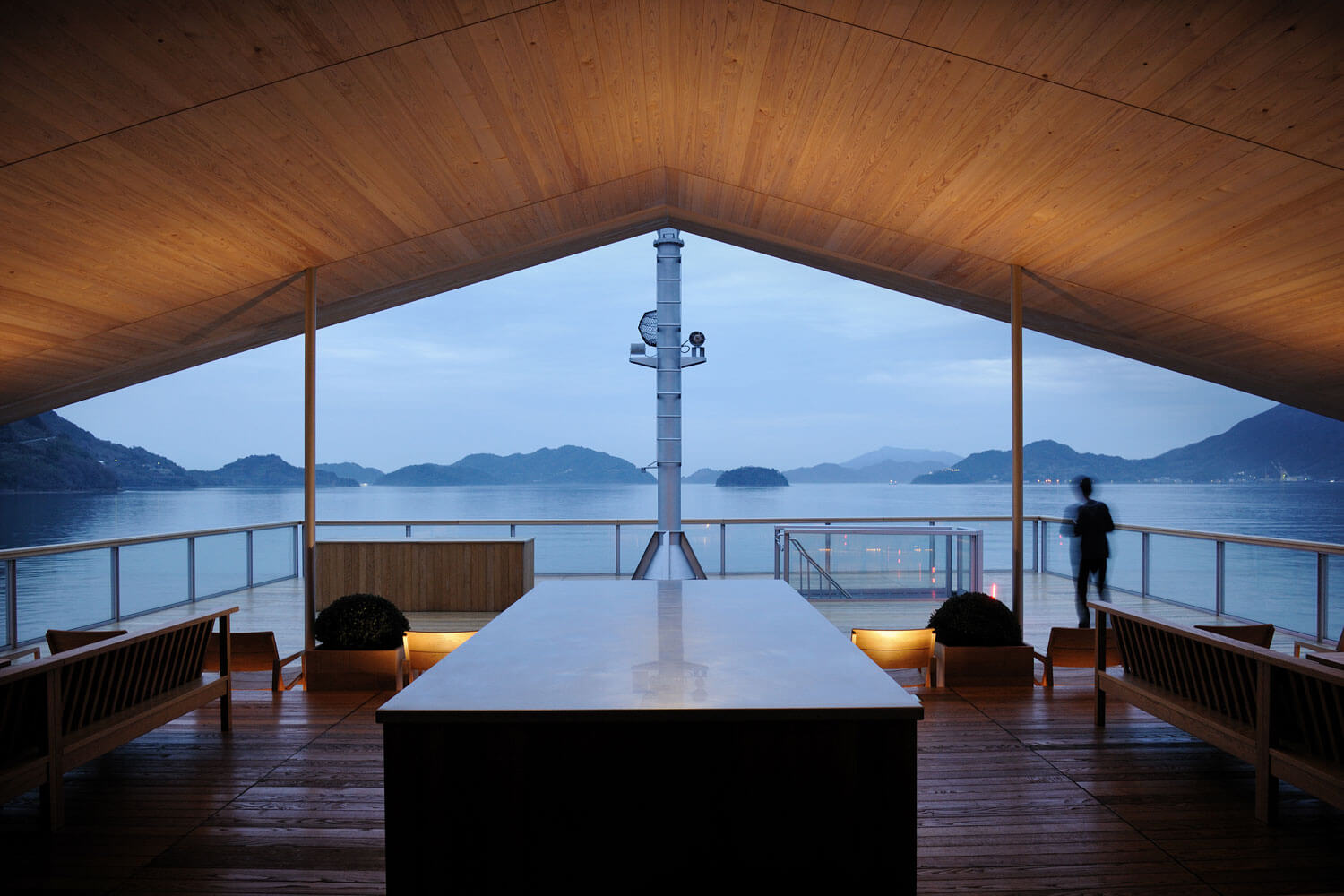
The dreamlike beauty of the scenery of the islands in the Seto Inland Sea—peering through the hazy clouds—as seen from the open deck atop the boat.
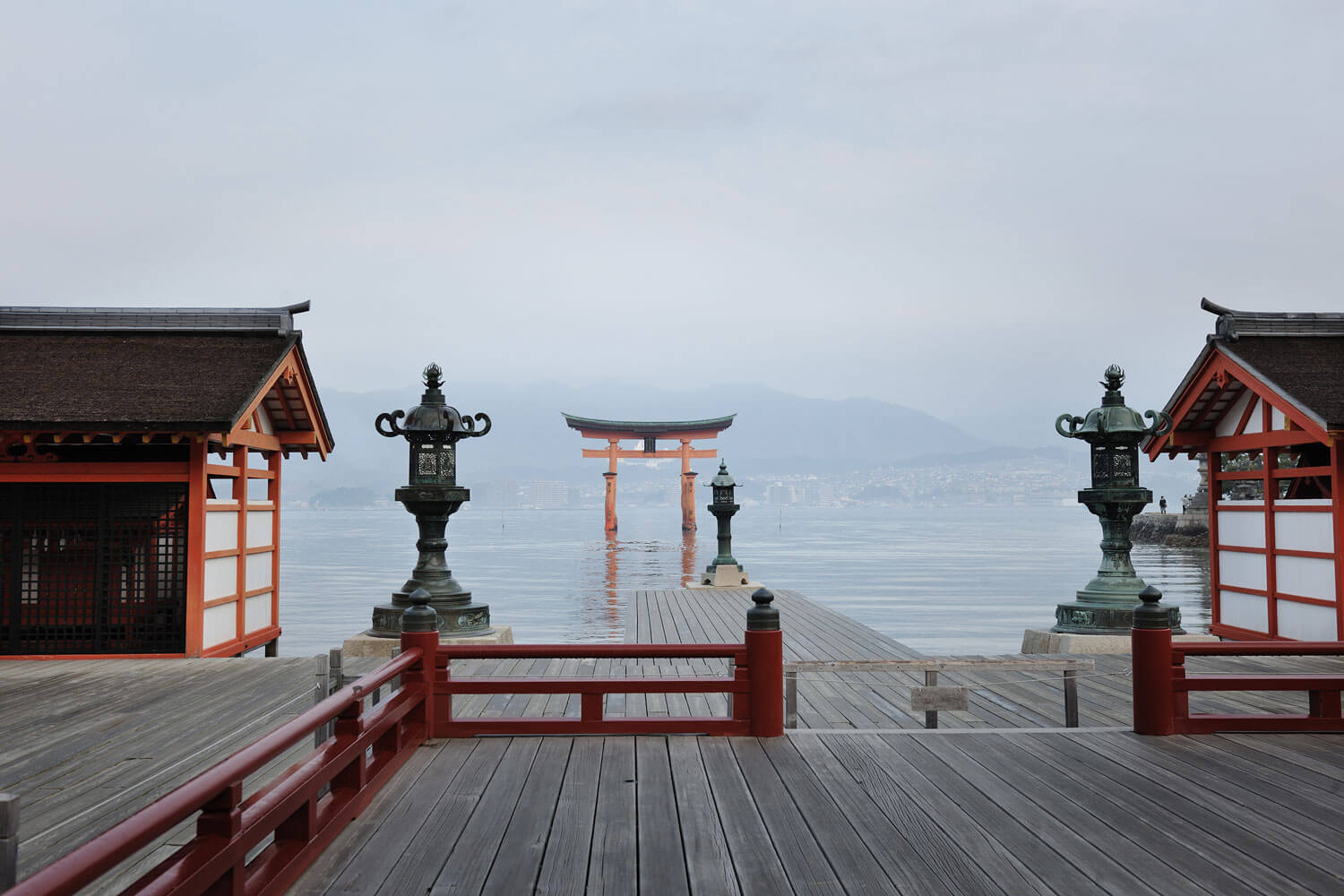
The landing of a tender onto Miyajima Island, where Itsukushima Shrine is located.
The Seto Inland Sea is also renowned as a treasure basket of things to eat. The quality of the shellfish captured in the gentle inland sea is so high that it constantly makes famous chefs weep. On guntû, guests can pretend that they, too, are fishermen as they enjoy their seafood, having taken out small boats to experience the fishing for themselves, then preparing, eating, and enjoying the tastes of what they have caught.
Besides a dining room, the boat also features a sushi bar. Both dining venues boast full-time chefs, renowned for their excellent skills, who take seafood freshly caught in the Seto Inland Sea and prepare it precisely according to the guests’ directions. It’s almost as if one was taking a cruise on a fishing boat with exclusive chefs aboard.

The chefs truly do take freshly-caught seafood and prepare it on the pier right outside the boat.
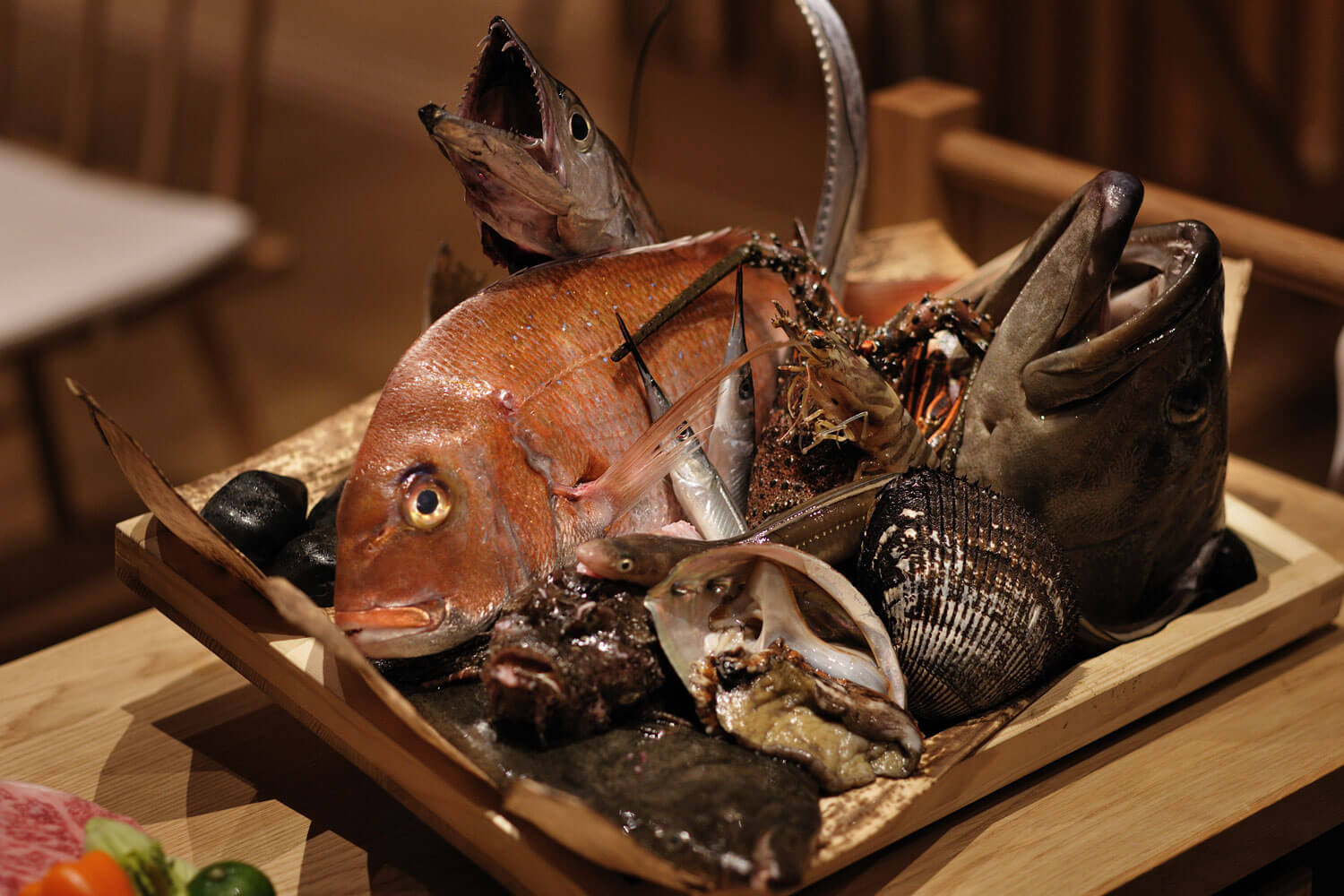
The freshly-caught seafood lifted from the Seto Inland Sea can be cooked to order by the chefs in any way that the guests want.
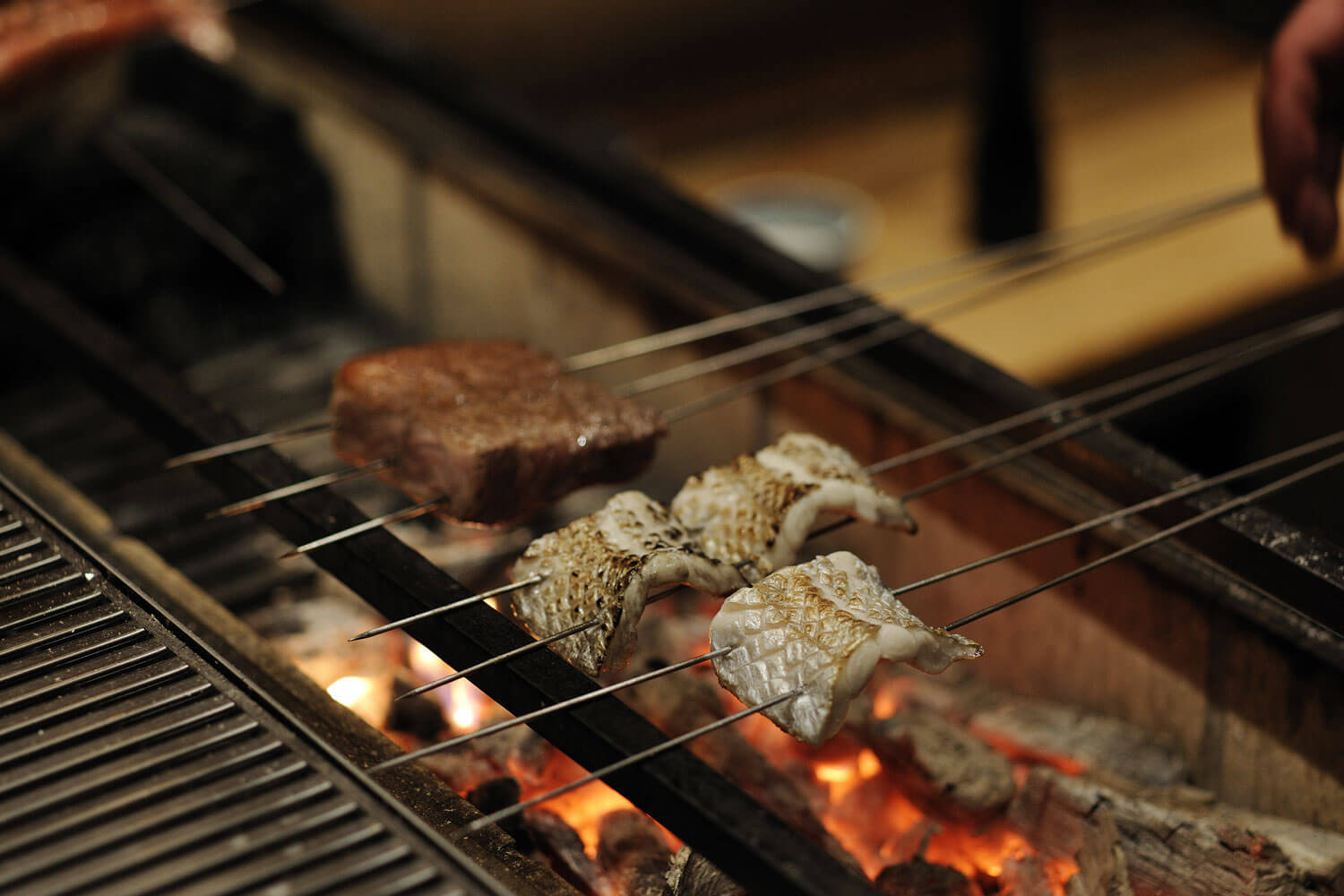
There is also an open-style space for robatayaki, or a Japanese-style barbecue. Such a facility is almost never to be found on passenger ships on account of the strict fire codes in place.
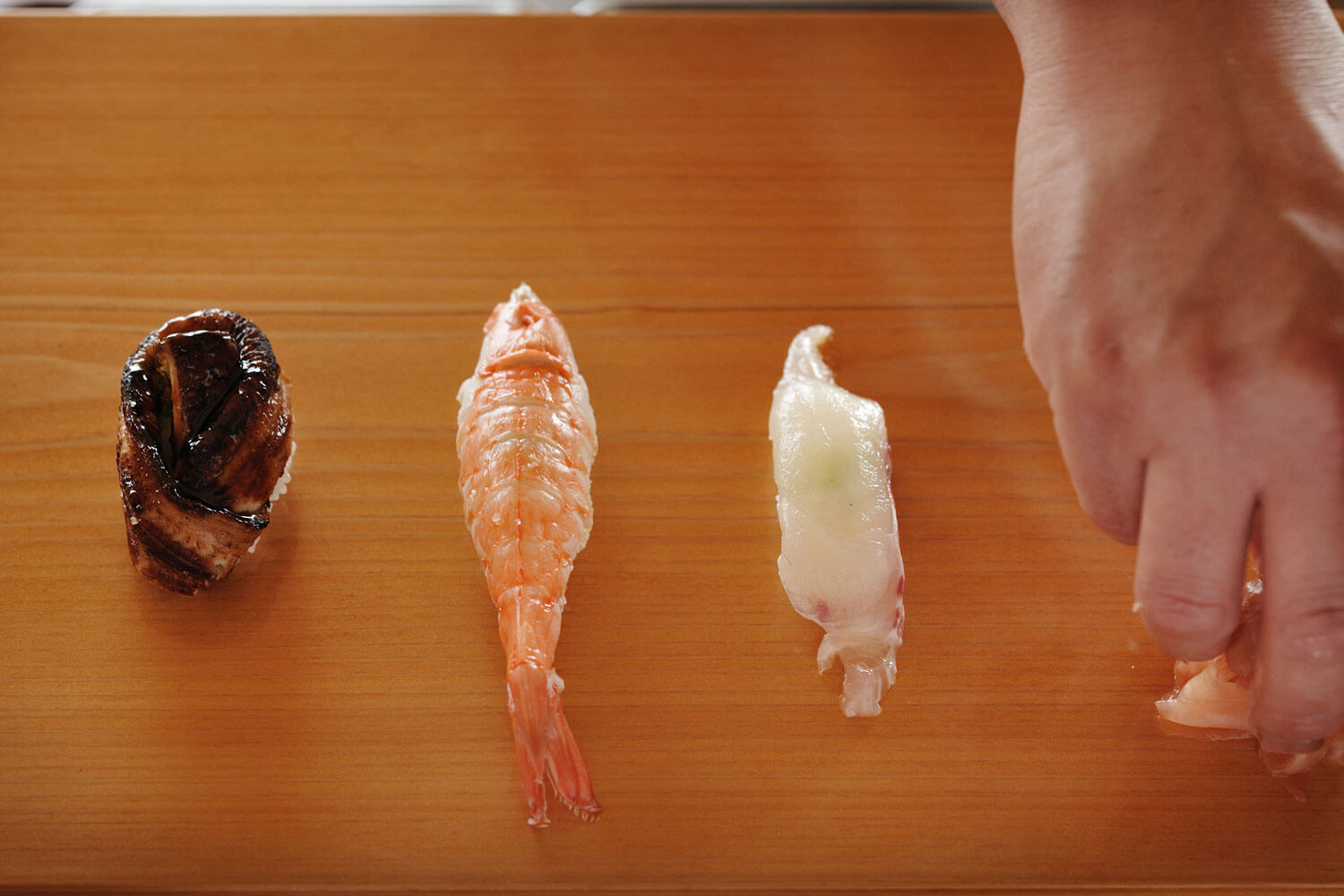
Freshly-caught seafood from the Seto Inland Sea being transformed into sushi by a top-class chef. What greater luxury could one expect?
Another way to experience ineffable luxury on guntû, perhaps paradoxically, is just to do nothing at all. When guests arise each morning, they are greeted by multi-island scenery already drifting past them through the windows. Part of the scene on shore may include men working in shipbuilding yards, or fishermen dangling their fishing lines into the sea, or schoolchildren cycling to their morning lessons. The routine life of the Seto Inland Sea flows by the boat as if in a story. When seen from the extraordinary vantage point of the sea, even things as simple as everyday human behavior can become unbearably stimulating. Tasting fresh seafood through the eyes of a fisherman, as stated previously, certainly falls into that category of experiences. While fish just as fresh can be enjoyed on land as well, eating it in a fishing port or on board or ship will definitely cause one’s tongue’s sensibility and sensitivity toward the ingredients to change.
It would be remiss to simply describe guntû as just another ‘luxury boat’. Its true value lies in being as close to a local boat trip as possible while offering the ultimate in luxury.
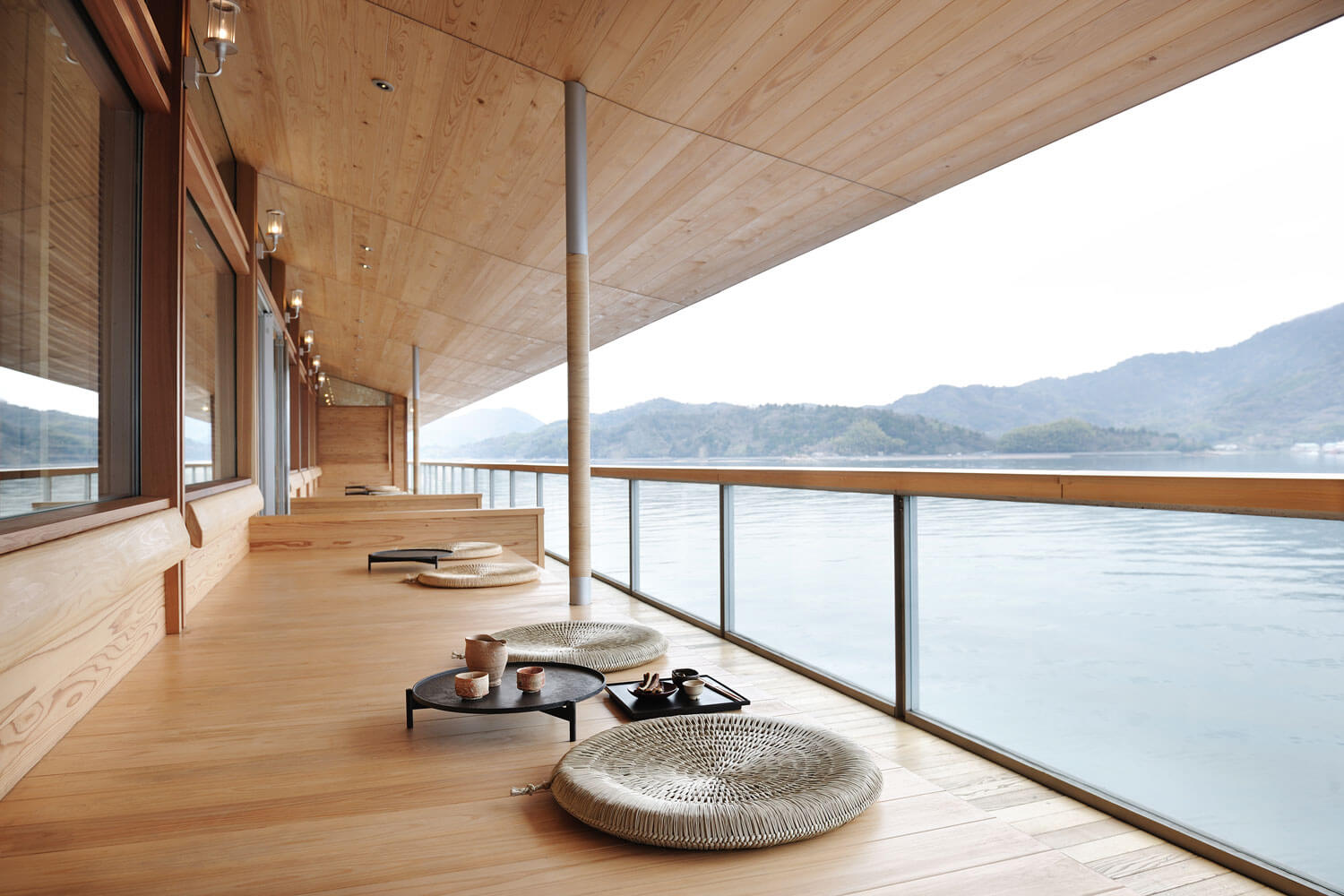
TRENDING
-
The Tattoos that Marked the Criminals of the Edo Period
Traditional tattoos were strong signifiers; murderers had head tattoos, while theft might result in an arm tattoo.

-
The Story of Sada Yacco, the Geisha who Bewitched Europe
Described by Dazed magazine as the first beauty influencer, she has been restored to her former glory since 2019.

-
Chiharu Shiota, Red Threads of the Soul
Last year, more than 660,000 people visited the retrospective 'Chiharu Shiota: The Soul Trembles' exhibit at the Mori Art Museum.

-
Japanese Left-field Pop From The CD Age, 1989-1996
‘Heisei No Oto’, a compilation of hidden gems in the unspoken depths of Japanese pop, reveal blissful moment of technological possibility.

-
‘Shojo Tsubaki’, A Freakshow
Underground manga artist Suehiro Maruo’s infamous masterpiece canonised a historical fascination towards the erotic-grotesque genre.





